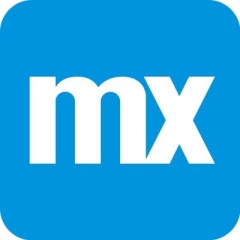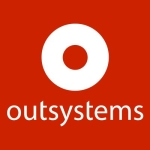What is our primary use case?
My company is a service consulting company that works for different customers across the globe. When my company proposes Mendix for a low-code/no-code platform to any customer, or if the customer chooses Mendix, the license will be procured by the customer, and my company will take care of service implementation.
I use Mendix as a solution architect. I'm a low-code/no-code platform solution architect. Whenever a requirement comes to me, particularly one which demands low-code/no-code platform implementation, I use Mendix. For any B2C or B2B mobile app, or B2B or B2C web portal, any sort of headless commerce integration, or any cloud modernization, or SAP ecosystem within a customer, and the customer would like to implement a B2C mobile app, Mendix is an automatic choice because Mendix and Siemens have a very good tie-up or partnership, and it's not only from a business perspective but a technical perspective. Mendix is very much compatible with SAP. When my company sees that there is an opportunity to implement low-code/no-code, it proposes Mendix over other low-code platforms.
What is most valuable?
What I found most valuable in Mendix is that it's very much suitable for mobile apps such as native Android or IOS supported mobile apps. The multiple features of the platform are very, very attractive and very popular. Mendix has technical features such as microflows and nanoflows. You can also access data models in the platform. These are the features that are very, very strong in Mendix. I got my hands dirty on other low-code platforms, but I have not seen such strong features in them compared to the microflows, nanoflows, and data model access that are in Mendix, including creating and integration. The platform has out-of-the-box adapters or out-of-the-box-connectors that you can integrate with different interface applications such as SAP, Salesforce, Oracle EBS, etc.
Another valuable feature of Mendix is that if you want to connect with any legacy applications, you can write custom Java code because Mendix supports Java, the universal language. My company can write custom code and connect to any legacy or home grown applications for any enterprise ecosystem or IT ecosystem.
These are the strong benefits I see in Mendix.
What needs improvement?
I found some issues in Mendix. The platform still has many areas for improvement. If I compare apples to apples, the PWA features of Mendix could be improved, for example, I wouldn't recommend creating a B2C or B2B marketplace or web portals on Mendix, but there's a tendency for people to still do it through the systems provided by my company, particularly implement B2B or B2C marketplace, versus using eBay or Shopify. On the web portal front, Mendix still needs to improve.
Additional features I'd like to see in the next release of Mendix are better BPM modeling and workflow modeling, because their competitor Appian is very, very strong in workflow modeling. Workflow features could still be improved.
RPA features or automation features also need to be added to Mendix. Process Mining and AI email are also additional features that would make the platform better. All these features are offered by Appian, which is a complete package, low-code tool that's a competitor of Mendix. Adding all these features to Mendix would make it more competitive, not just over Appian, but over other similar tools as well.
For how long have I used the solution?
I have been using Mendix for the last three years.
Buyer's Guide
Mendix
December 2025
Learn what your peers think about Mendix. Get advice and tips from experienced pros sharing their opinions. Updated: December 2025.
879,477 professionals have used our research since 2012.
What do I think about the stability of the solution?
Mendix is a stable platform. In terms of stability, I'm rating it eight out of ten.
What do I think about the scalability of the solution?
Mendix is a scalable platform. You can scale it up anytime. The platform provides you with much flexibility, and my rating for it in terms of scalability is nine out of ten.
How are customer service and support?
As a premium partner of Mendix, my company is constantly in touch with technical support, plus the Alliance team of Mendix. I am very well connected with the Mendix Alliance team. I find the technical support for Mendix very, very helpful and supportive. Whenever I reach out to the different Alliance people from any geography, I get prompt responses and I find the team very, very helpful.
Which solution did I use previously and why did I switch?
We are working with different low-code/no-code products, not just Mendix. We have in our practice multiple low-code platforms. We are not only working with Mendix. We are working with our systems such as Hancock and Appian.
How was the initial setup?
The initial setup for Mendix was straightforward. You just have to download Mendix Studio Pro if you are using a desktop computer, and you can create your app very easily. If you are using the cloud version, for example, Mendix cloud or any other cloud, especially as any other cloud is hosting Mendix, it's really easy to access the developer. All partners develop the portal access where Studio and Studio Pro are enabled for my company, so my team can work on any cloud-based application. Setting up Mendix was very easy.
What about the implementation team?
The deployment of Mendix was done in-house. Deployment was not complicated compared to any other local platform. Deployment was very easy. Mendix has cloud architecture for different clouds such as GCP, AWS, Microsoft Azure, and even SAP Cloud. You just need to follow and you can deploy your Mendix components on cloud-native architecture.
What's my experience with pricing, setup cost, and licensing?
Mendix is not open source, but its license cost is cheap, particularly when compared to the Appian license. The license model would depend on how many users you have and how many applications you are creating. If you are creating a single app, you just need to have a single app license, so it's free. If you want a multiple app license to cover two thousand or three thousand users, for example, internal users or external users, then you need to pay for the license. There's also a license model for above three thousand or four thousand, or five thousand internal and external users. Internal users are the developers who will create different applications using Mendix, while external users are the customers.
What other advice do I have?
Currently, I'm using Mendix. I'm heading the factories of my company low-code/no-code, and my company has Mendix as a local platform in the portfolio, apart from other platforms such as Appian, Hancock, etc. I'm using the latest version of Mendix, but I started with the basic version of Mendix when the platform was newly rolled out, particularly when it was just being offered to partners.
My company has a premier partnership with Mendix, so it has access to the Mendix private cloud. The solution is deployed on a private cloud.
My company has two hundred low-code practitioners using Mendix.
Before advising other people looking into using Mendix, I would check first if he or she is a single developer or a pro developer. A single developer is a business user. Mendix as a tool is very, very suitable for a single developer, for business users who have very little knowledge of programming language, so a single developer can create a quick app out of Mendix.
For a pro developer, or someone already hands-on in terms of different programming languages such as Java, .NET, etc., Mendix could be a piece of cake. For a small shop that needs a small application, the business user or single developer can create small applications, but for a midsize organization or a large enterprise organization, you need pro developers who are hands-on with different programming languages, so a single developer cannot build the app for an enterprise or a midsize organization.
If it's a first-timer pro developer using Mendix, it's a low-code/no-code tool, so he or she doesn't have to bother about the programming language. Mendix provides a visual ID or a visual model, so the pro-developer can just drag and drop based on the programming concept. Through Mendix, the pro developer can also work on the front end, UI forms, and also configure the microflows and nanoflows, and also configure out-of-the-box connectors to connect with different enterprise applications. Mendix is a very easy platform for pro developers.
My rating for Mendix is nine out of ten. It's a pure-play low-code platform, so ideally a low-code platform has some fundamental features, and Mendix has that. It's very much suitable for creating a mobile app, for example, a B2B or B2C mobile app. I recommend it to any customer for their B2C or B2B mobile applications. Any enterprise customer that has a SAP India ecosystem and seeking low-code/no-code platform implementation should go for Mendix.
Which deployment model are you using for this solution?
Private Cloud
If public cloud, private cloud, or hybrid cloud, which cloud provider do you use?
Other
Disclosure: My company has a business relationship with this vendor other than being a customer. partner



















